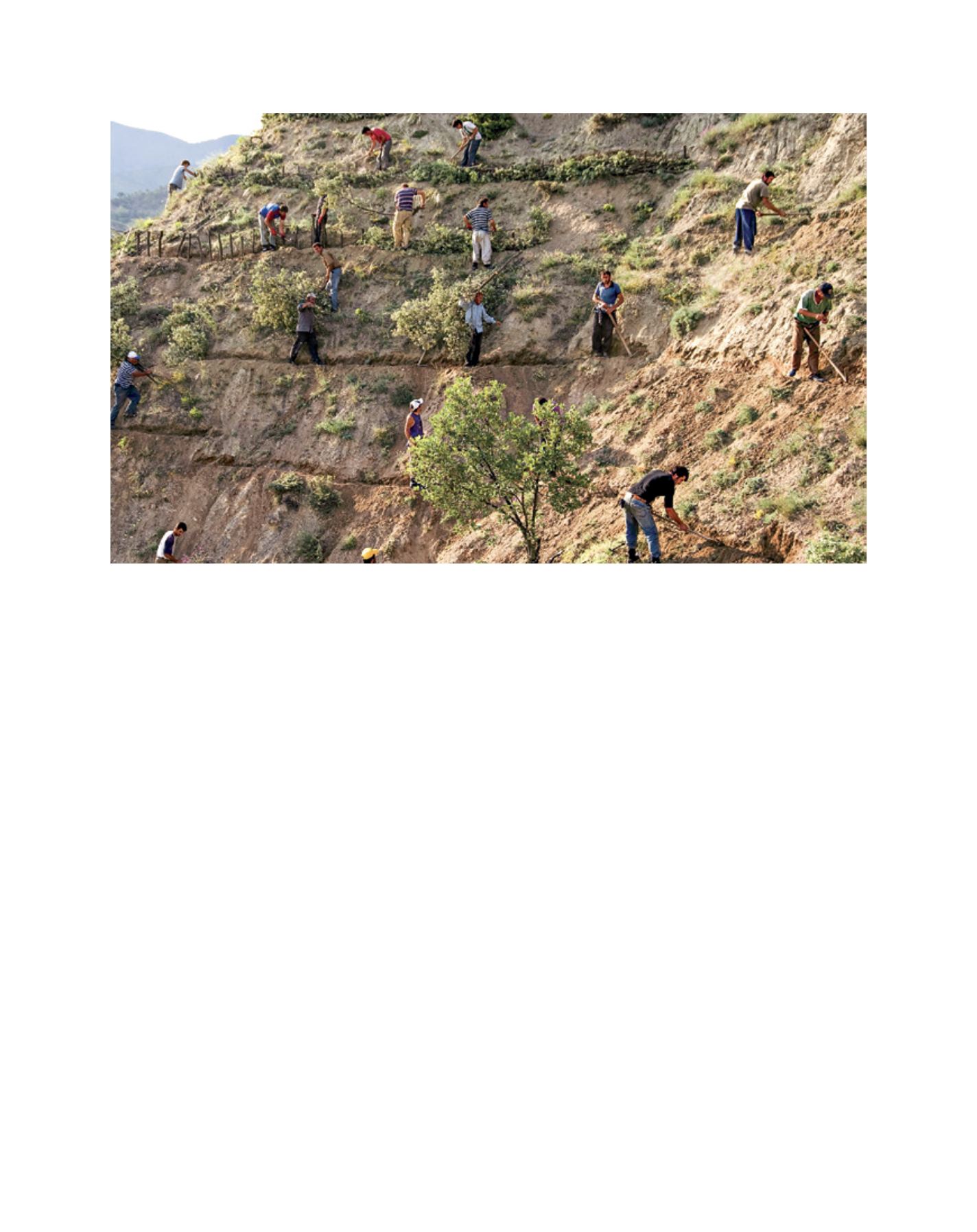

[
] 38
public bodies and institutions as well as all the parties of the
community. The action plan was applied from 2008 to 2012.
During its five years, the plan detailed the undertaking of
afforestation, rehabilitation and erosion control and rangeland
rehabilitation works on an area of 2.3 million hectares. The
Ministry of Environment and Forestry aimed to accomplish the
work on 2.16 million hectares of this area and other bodies and
institutions on 136,000 hectares. The total cost of these works
was estimated at more than TL 2.7 billion.
In order to assume that a country is self-sufficient in terms
of its forests, at least 30 per cent of its land should be covered
with forest. In 2004, 27.2 per cent of Turkey’s land was
covered with forest. This figure was close to the world norms.
However, 49 per cent of our forest lands are degraded, and
these should be converted to productive forests as soon as
possible. Our target for 2023 is to reach 23 million hectares
of forest area, which means 30 per cent of the country’s area.
Some parts of Turkey’s degraded forest lands are stony and
rocky so they cannot quickly be made economically productive.
Nearly 4.2 million hectares of degraded forest can be converted to
productive forest areas by afforestation, rehabilitation and erosion
control works. Furthermore, there are nearly 1 million hectares of
treasury land suitable for afforestation and erosion control works.
According to the results of the forest inventory works, there
has been an increase of nearly 1 million hectares in the area of
forest lands in Turkey during the past 30 years:
• 1963-1972: 20.2 million hectares (26.1 per cent of the
total area)
• 1997: 20.7 million hectares (26.6 per cent of the total area)
• 2004: 21.19 million hectares (27.2 per cent of total area).
The National Afforestation and Erosion Control Mobilization
Action Plan had several objectives:
• Rehabilitate forest and 10 per cent of canopy closures in
Turkey and make them productive again with minimum
effort and minimum cost through a forestry approach
close to the nature.
• Restore the balance of nature to establish a liveable
environment and minimize the potential effects of global
warming, climate change and desertification in the country.
• Prevent floods and overflows, which are seen frequently in the
river watersheds and lead to loss of lives and goods; regulate
water run-off in the watersheds and improve water quality.
• Reduce the current pressure for wood production on
the forests by establishing forests in order to meet the
country’s need in for wood raw materials.
• Raise community awareness of the importance of caring
for saplings, trees and forests by initiating afforestation
mobilization, and establish the planting of saplings as
a common tradition practised by citizens every year.
Through a love of nature, the concept of beautification of
the environment will be established in citizens’ hearts.
• Look after each sapling planted and prevent our country’s
soil from being carried away by erosion to the lakes, dams
or seas, so Turkey’s citizens can live in a greener and
cleaner environment.
Today, humankind frequently experiences various types of disas-
ters such as drought, desertification, erosion, floods, avalanches
and famine. Each year, many humans and other creatures die due
to natural disasters in Turkey and across the world. The people
Image: Min. of Forestry and Water Affairs, Turkey
Each year of the mobilization, 300,000 people were employed for seed and seedling production, afforestation, rehabilitation and erosion control work
L
iving
L
and
















